The BEST episodes of Modern Marvels season 12
Every episode of Modern Marvels season 12, ranked from best to worst by thousands of votes from fans of the show. The best episodes of Modern Marvels season 12!
Celebrating ingenuity, invention and imagination brought to life on a grand scale, MODERN MARVELS tells the fascinating stories of the doers, dreamers and sometime-schemers who created everyday items, technological breakthroughs and man-made wonders.
#1 - The Great Bridge: 8 Miles of Steel
Season 12 - Episode 8 - Aired 2/23/2005
San Francisco's Oakland Bay Bridge stands as an incredible feat of engineering against the nearly impossible. Once chosen as one of the seven engineering wonders of the modern world, it features an unique double suspension structure in its west end. Join us as we cross this triumph of construction, while we visit its past and look to its future.
Watch Now:Amazon#2 - Desert Tech
Season 12 - Episode 9 - Aired 2/23/2005
It's hot, dry, deadly, and hard to ignore with close to 40% of Earth classified as desert. But in this scorching hour, the desert turns from barren wasteland into an environment rich with hope. In the Middle East, desalination of seawater now fills water needs. Americans have created booming desert communities like Las Vegas, where the Hoover Dam produces hydroelectric power and manmade Lake Mead supplies water. Native Americans farmed the desert on a small scale, but 20th-century technology begot greater opportunity. Once desolate areas of California and Mexico now grow agriculture due to irrigation, and the desert's abundant sunshine allows solar-energy and wind-power production. And in the future, desert technology may enable colonization of planets like Mars. We also take a look at how refrigeration and air conditioning have made life in desert communities tolerable, and examine the latest in survival gear and equipment.
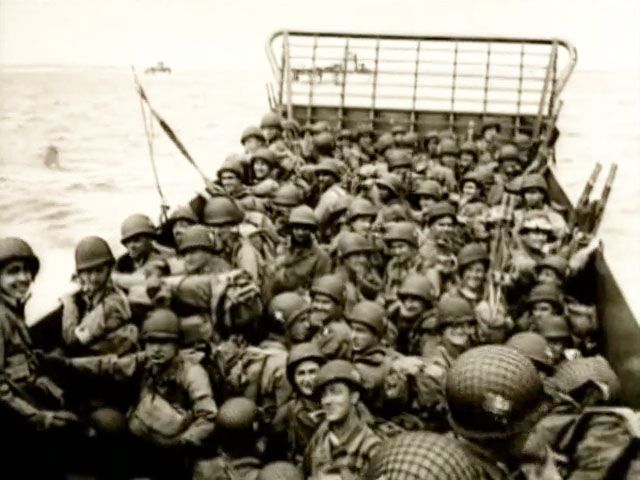
#3 - Machines of D-Day
Season 12 - Episode 24 - Aired 6/3/2005
June 6, 1944--the greatest machine of World War Two springs into action. It is made up of thousands of ships and aircraft, tens of thousands of men and millions of tons of steel and concrete. This is Operation Overlord--the invasion machine that will send Allied soldiers dropping from the skies and storming the beaches of Normandy. Each piece of this machine has been designed to fulfill a specific task in the air, on land, or at sea. The success of D-Day depends on it. Interlocking with pinpoint precision, the men and machines of Overlord overcome not just Hitler's beach defenses, but nature itself in the greatest assault the world has ever seen. Using archive film, and color reenactments, we reveal the phenomenal hardware of D-Day.
#4 - Cereal: History in a Bowl
Season 12 - Episode 44 - Aired 9/14/2005
Move over pancakes, step aside bacon! Cereal is arguably the true breakfast king, a $9-billion industry with an indisputable place in pop-culture history. Full of surprise, nostalgia, and fascinating facts, our special celebrates the colorful--and crunchy--saga of a distinctly American breakfast. We see how a Presbyterian minister-turned-health-food-fanatic--Sylvester Graham, of "Graham cracker" fame--turned his countrymen from fried pork breakfasts to grain- and bran-heavy diets in 1824. We reveal the rivalries, tricks, and accidents that turned cereal into a breakfast sensation. And we examine the amazing feats of marketing used to promote the product--from creating iconic characters for packaging, to ingenious prizes that drove consumers to the shelves in droves.
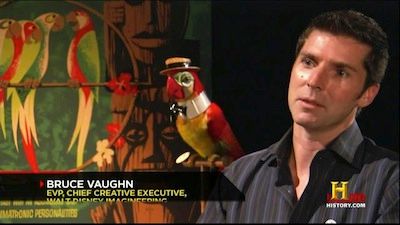
#5 - Walt Disney World
Season 12 - Episode 57 - Aired 12/25/2005
It is a magical place, full of animated storybook characters, majestic castles, thrilling rides, and colorful parades. For over thirty-five years, Walt Disney World has been welcoming and entertaining kids of all ages, cultures, and backgrounds. The world-famous Orlando theme park is not only the most visited in the world, it’s also the most technologically advanced. From a network of underground tunnels connecting various regions of the park, to the space-age propulsion technology of linear synchronous motors, the Disney dynasty has been on the leading edge of theme park innovation since the opening of Disneyland, its first park, in 1955. With soaring castles, sleek monorails, and lifelike animatronics, THE HISTORY CHANNEL takes a behind-the-scenes look at the ingenious industry and incredible engineering feats that went into building the renowned 27,000 acre Disney World complex.
#6 - Cowboy Tech
Season 12 - Episode 32 - Aired 7/20/2005
Today's cowboy plants one boot firmly in the traditions of the Old West and the other in the world of modern technology. Beginning in the 19th century, the era in which the American cattle industry boomed, we examine cowboy technology. Learn how North American cowboys converted saddles, ropes, spurs, and other equipment originally developed by the Spanish, into tools of the trade perfectly suited for the developing cattle industry. And see how the invention of barbed wire revolutionized the cowboy's world. Step into the 21st century with today's cowboys who use computer chips, retinal scans, DNA evidence to round up cattle rustlers, and high-tech digital-imaging devices to aid in shoeing horses...and ride ATVs as often as their horses. In the world of rodeo, witness today's cowboys as they utilize advanced theories of genetics and artificial insemination in an attempt to breed the perfect bucking bull.
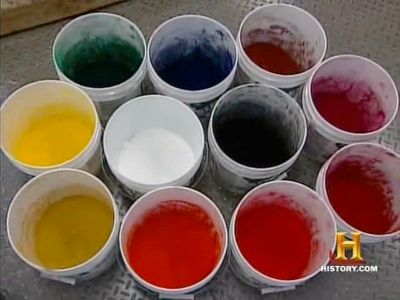
#7 - Paint
Season 12 - Episode 18 - Aired 4/27/2005
From the Impressionist canvas to the Space Shuttle...from customized hotrods to the brilliant orange hue of the Golden Gate Bridge or tiny electronic devices--paint is one of our most ubiquitous products. And paint adds more than just pigmentation. It's a crucial engineering element, protecting ships from water corrosion, stovetops from heat, and the Stealth Bomber from radar detection. In homes and businesses, it provides a balanced spectrum of light and protects surfaces from wear. In this colorful hour, we discover how this marvel of chemistry and engineering is made, and how it is applied. Come see what's beneath the surface as we reveal one of man's most ingenious methods of defeating the elements and adding spice to life!
#8 - Hardware Stores 2
Season 12 - Episode 55 - Aired 12/6/2005
The hardware store is the epicenter of the construction world for both the weekend handyman or professional builder.
#9 - Secret Allied Aircraft of WWII
Season 12 - Episode 48 - Aired 10/14/2005
At WWII's outset, US and UK military aircraft designs were woefully behind Germany's and Japan's technologically superior planes. But the genius and ingenuity of innovators on both sides of the Atlantic closed the gap. For America, it was a handful of visionaries and their teams; for Great Britain, a creative and thoughtful spirit emanated from the top leadership on down. In this hour, we recount the untold stories of their cutting-edge designs and solutions, some of which proved decades ahead of their time.
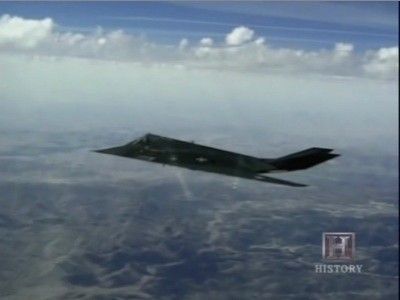
#10 - The F-117 Nighthawk
Season 12 - Episode 45 - Aired 9/22/2005
The project was surrounded by secrecy and dogged by controversy from the very beginning. Starting in the late '70s, engineers at Lockheed's legendary "Skunkworks" developed a revolutionary new fighter that was destined to transform aerial combat forever. Little more than a decade later, the F-117 NIGHTHAWK STEALTH fighter saw combat for the first time in Panama.
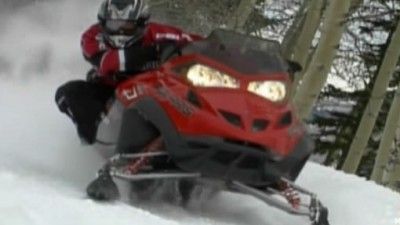
#11 - Sub Zero Tech
Season 12 - Episode 10 - Aired 2/23/2005
Come in from the cold while we explore some of Earth's most frigid places and examine how man copes with sub-zero climates. With the advance of technology, our boundaries have expanded--from the North and South Poles, to the depths beneath the Arctic and Antarctic sea ice, to the Moon, Mars, and outward to Saturn. Enter these forbidding territories, guided by a special breed of experts as we inspect the new U.S. South Pole Station, try on the latest Polartec fashions with anti-microbial fibers, ride on the newest snowmobiles and Sno-Cats, sail through glacial waters on ice-breaking ships, and fly on an LC-130 transport plane. And we'll see what NASA has on the planning board for deep-space exploration, including a beach-ball robot explorer, and learn from scientists studying fish in the waters off Antarctica to understand glycoproteins, which may keep frozen tissue healthy longer for transplantation.
#12 - Edison Tech
Season 12 - Episode 29 - Aired 6/28/2005
He was the father of the future...electric lights, power systems, motion pictures, recorded sound--even the tattoo pen. Life as we know it would be inconceivable without the prodigious output of the Wizard of Menlo Park, Thomas Alva Edison. His intense focus on his work came with a hefty personal price, but his reward was a world forever changed by his genius. Years after his death, Edison's effect is seen, heard, and felt everywhere. We follow descendants of his motion-picture camera to the tops of Earth's highest mountains, to the bottoms of its deepest oceans, and even into outer space. We track his innovations in recorded sound to CDs, iPods, sophisticated movie sound, and satellite radio. And we illuminate his world of electric light, powering the world and turning night into day. Along the way, we discover a little Edison in corners of modern life less well-known and even look at his failures. From the Internet to the stock market to pay-per-view; the Wizard is everywhere.

#13 - Glue
Season 12 - Episode 20 - Aired 5/18/2005
It's Super! It's Krazy! And it can be found in everything from carpet to computers, books to boats, shoes to the Space Shuttle. It's even used in surgery! Without it, our material world would simply fall apart. In this episode, we'll visit the stuck-up, tacky world of glue. Glue's sticky trajectory spans human history and we'll cover it all--from Neolithic cave dwellers who used animal glue to decorate ceremonial skulls to modern everyday glues and their uses, including Elmer's glue, 3M's masking and Scotch tape, and the super glues. Remember the Krazy Glue commercial in which a man held himself suspended from a hard hat that had just been glued to a beam? Well, that 1970s vintage ad understates the power of glue. With the help of a crane, we're going to hoist a 6,000-pound pickup truck off the ground by a steel joint that's been bonded with glue!
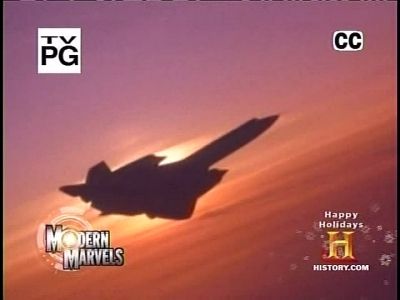
#14 - Blackbird Stealth!
Season 12 - Episode 5 - Aired 2/4/2005
Starting with the circumstances that led to it's creation up through its reitrement, this episode covers the SR-71 in depth. Stealth wasn't the ace in the whole for this bird...speed and altitude were. A highly educational hour with what is perhaps the best plane ever built, and which still holds all of it's speed and altitude records.
#15 - F/A-22 Raptor
Season 12 - Episode 21 - Aired 5/20/2005
Built around "first look, first shot, first kill" design, the F/A-22 Raptor, the most advanced aircraft of its breed, is set to become the Air Dominance Fighter of the 21st century. Deadly and undetectable at long-range, this super-jet is the latest in 5th generation fighter technology. Capable of super-cruise and packing an array of deadly missile systems, this stealth jet blends dogfighting skill with precision-strike ground attack capability and can intercept and strike any target with near impunity. In the 1980s, as Cold War tensions heightened and US defense spending increased, the Air Force decided it needed a replacement fighter for its F15 Eagle. The Advanced Tactical Fighter program was born, and the largest, most expensive program of its kind hatched the Raptor. Follow the 25-year development of America's deadliest fighter and see how stealth, super-cruise, and integrated avionics combine to create a fighter without equal.
#16 - Mega Movers
Season 12 - Episode 17 - Aired 4/27/2005
Join us on two treacherous trips as we follow two separate structural moving families in their struggles to relocate and save a 100-year-old homestead and an 1890 Queen Anne Victorian house. In Colorado, a father and son have to fight fierce weather and the fragility of a purported haunted log cabin and decaying barn to move them two miles across a rugged mountainside. In Illinois, three generations of movers are pushed to their limit when they are hired to transport a 180-ton monster house across town. Will these historic homes reach their final resting places in one piece and find peace?
#17 - The Butcher
Season 12 - Episode 6 - Aired 2/8/2005
In a carnivorous world, a butcher is a necessary link in the food chain, carving a carcass of unsavory flesh into mouthwatering cuts. We trace the grisly trade's evolution--from yesteryear's butcher-on-every-corner to today's industrial butcher working on a "disassembly" line. We tour the infamous remains of the Chicago Stockyards, where Upton Sinclair, Clarence Birdseye, and refrigeration changed butchering forever; witness high-speed butchering; and travel to a non-stop sausage factory. And if you're still squeamish, a USDA inspector offers the lowdown on HACCP--the country's new system of checks and balances on everything from quality grading to E. coli, Salmonella, and Mad Cow Disease. Finally, we visit the last bastion of old-school butchering--the rural custom butcher, who slaughters, eviscerates, skins, and cuts to his customer's wishes.
#18 - Nature's Engineers 2
Season 12 - Episode 3 - Aired 1/18/2005
Think man is unique within the animal kingdom? You might not after this hour that features an amazing collection of earth's non-human inhabitants that use tools, build intricate structures, create traps to capture prey, and perform complex procedures, including farming. From Egyptian vultures utilizing stones to crack open hard-shelled ostrich eggs to chimpanzees using a "tool kit" to extract termites from their nests, we learn that our ability to create tools is not exclusive. Other mammals create subterranean structures, including those prodigious diggers Prairie Dogs, and many animals and insects make devices to augment hunting, such as the Ogre-faced Spider that spins a small web to throw down on unsuspecting passersby. And we're not the only ones to work as a unified, multi-skilled force. Aphid-Raising Ants protect and care for herds of plant juice-sucking aphids that they "milk".
#19 - The World's Fastest
Season 12 - Episode 38 - Aired 8/24/2005
Perhaps no field has experienced this revolution in velocity more acutely than transportation. We look at five blazingly fast technological marvels that have pushed the speed limits to the very edge, each with its own unique and dramatic history: the world's fastest production car (Sweden's Koenigsegg CCR); the world's fastest train (the Maglev in Shanghai); the world's fastest boat (The Spirit of Australia); the world's fastest roller coaster (the Kingda Ka) and the fastest thing on earth (the Holloman High Speed Test Track), used to test highly sensitive equipment for many branches of the government and commercial clients.
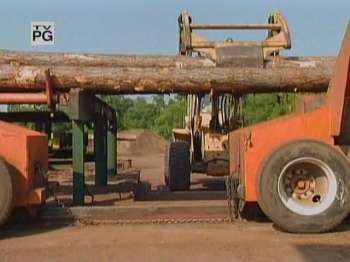
#20 - Wiring America
Season 12 - Episode 41 - Aired 8/31/2005
We begin with electrical linemen perched precariously out a helicopter door, repairing 345,000-volt high-tension power lines. They are part of an army of technicians and scientists we'll ride, climb, and crawl with on this episode. They risk their lives so that we can have the services we take for granted--electric power and 21st century communications. They lay and maintain the wire that connects us one to another, as well as America to the rest of the world. The hardwiring of America is a story that is nearly two centuries old. And though satellites and wireless systems may be challenging the wire, it's not dead. Fiber optic cable, lines that transmit light, became a player in information delivery in the late 1970s. We may be entering a "wireless" age, but the infrastructure of wires laid by visionary scientists and industrialists are still vital to America. Wire technology will be with us, continuing to provide service, well into the next century.
#21 - The B-2 Stealth Bomber
Season 12 - Episode 39 - Aired 8/26/2005
In any battle, the key to victory is the ability to strike the enemy without them knowing what hit them. Within the US arsenal one such weapon can go into harm's way, deliver 40,000 pounds of either conventional or nuclear bombs, and slip away unobserved--the B-2 Stealth Bomber. With its origins in single-wing experimentation in Germany in the 1930s, the B-2 was developed under a cloak of secrecy. But when that cloak was lifted, the world was awed by what stood before them. Able to fly over 6,000 miles without refueling, it can reach whatever target the US military wants to attack and deliver its awesome array of laser-guided weapons with pinpoint accuracy. Using state-of-the-art technology, including over 130 onboard computers, and shrouded by a mantle of stealth, it's undetectable by any radar.
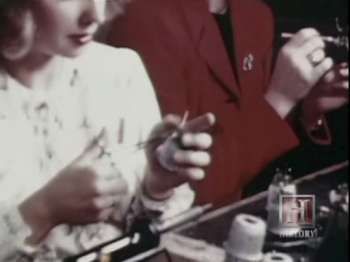
#22 - Deadliest Weapons
Season 12 - Episode 13 - Aired 3/16/2005
In this fiery hour, we profile five of the world's deadliest weapons, focusing on the inventors, battles, and dark technology behind their lethality. Beginning with the deadliest bomb ever created, the Tsar Bomba--a 50-megaton nuclear bomb--we move on to the deadliest weapons ever used on people, the atomic bombs exploded over Hiroshima and Nagasaki in August 1945. During WWI, the machine gun led to the deaths of over 8-million, and in WWII, the use of incendiary bombs killed hundreds of thousands of people. Another deadly invention of WWII was the proximity fuse, or VT fuse, that allowed artillery to detonate within a predetermined range of an enemy target. Finally, we examine VX nerve gas--a deadly chemical agent used twice by Saddam Hussein with devastating results--and visit Edgewood Chemical BioCenter, where suspicious items in the current war in Iraq are examined for traces of VX.
#23 - The Lumberyard
Season 12 - Episode 52 - Aired 11/30/2005
At the center of the American Dream is the home, and at the center of its creation or renovation is the lumberyard. We'll explore the options lumberyards provide for builders and renovators, from natural to engineered woods.
#24 - Poison
Season 12 - Episode 1 - Aired 1/5/2005
Since ancient times, man has tried to control the "devil's bounty"--deadly substances found throughout nature. Paradoxically, some of these lethal compounds are now found to possess life-giving properties. In this hour, we explore how ancient Egyptians, Greeks, and Romans came to rely on the pernicious power of poisons and learn the physiological action of these potent killers. During the Renaissance, known as the Golden Age of Poison, the deadly practice helped shape European history--most especially that of the Catholic Church. We continue our investigation into the gas attacks of WWI and up to the 21st century, when a new and serious threat of bioterrorism plagues the globe. Finally, we peer into the future with scientists experimenting with poisons and venoms from the plant and animal kingdoms that may play an important part in healing diseases such as arthritis and even cancer.
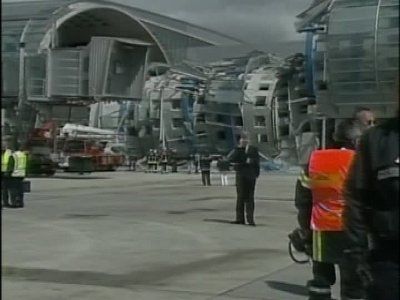
#25 - Engineering Disasters 17
Season 12 - Episode 50 - Aired 11/2/2005
It's another chapter of complex, deadly and controversial engineering failures, using 3-D animation, forensic engineering experts, and footage of the actual disasters to understand what went wrong, and how disaster has led to improvement. In Sun Valley, California, weeks of record rain turn a crack in the middle of a street into a 200-foot long sinkhole. Months later, rain led to the Laguna Beach, California landslide, which destroyed 11 homes and caused millions in damage. On May 23, 2004, four people were killed when the roof of the new Terminal 2E at Charles de Gaulle International Airport in Paris collapses. Other disasters: the 1931 crash of Fokker F-10 passenger airplane with coach Knute Rockne aboard; the sinking of the coal ship Marine Electric off the coast of Virginia; and the blinding reflection of the new Walt Disney Concert Hall in Los Angeles.